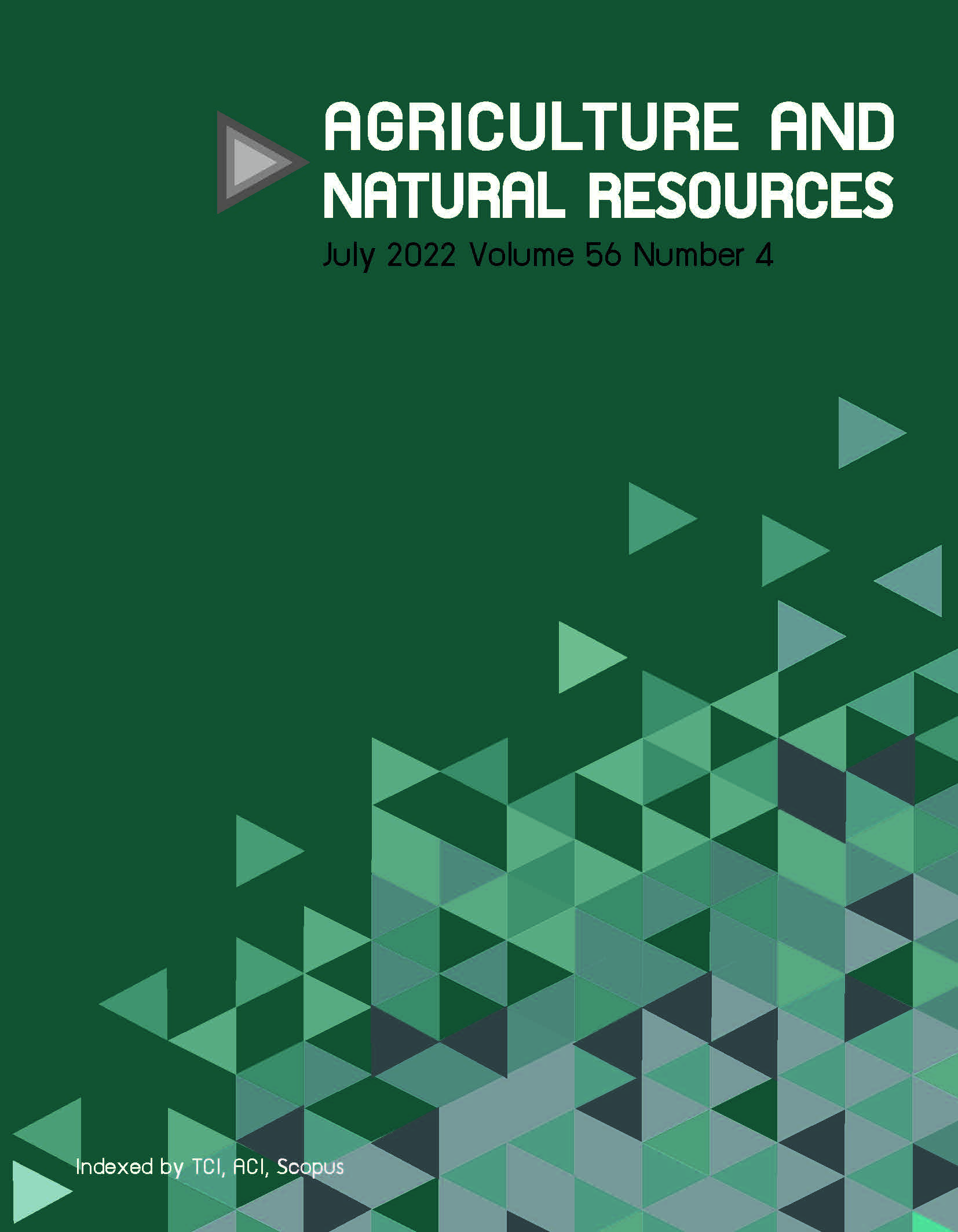Evaluation of seed protein concentration and storage protein profiles in vegetable soybeans with different seed coat colors during seed development
Keywords:
11S/7S ratio, Seed Protein Concentration, Seed Storage Protein, Vegetable SoybeansAbstract
Importance of the work: Vegetable soybean (Glycine max (L.) Merr.) is a good source of protein; however, there are not many of its traits related to nutritional value available in the market.
Objective: To develop a new nutritional value of protein in vegetable soybean, using the evaluation of protein concentration in various unique traits such as seed coat.
Materials & Methods: Twelve vegetable soybeans varieties with different seed coat colors, between stages R5 and R6, were evaluated for their seed protein concentration and seed storage protein profiles. The seed coats of the 12 varieties were classified into 3 groups: yellow, green and brown. The seed protein concentration (SPC) was analyzed at 15 d after flowering (DAF), 25 DAF, 35 DAF and 45 DAF and the seed storage protein profiles were analyzed at 35 DAF and 45 DAF. The soybean plants were grown in randomized complete block design plots with three replications and average mean comparisons were calculated using Tukey’s honest significant difference.
Results: The variety Koucha, usually harvested around 30–35 DAF, had the highest SPC. For each variety, the 11S/7S subunit ratio was calculated to determine the seed protein profile as a reflection of the seed nutritional value. The varieties with the highest ratios according to seed coat color were: yellow (Chiang Mai 84-2), green (No.9) and brown (Shounai 2 gou).
Main finding: Overall, the SPC values and 11S/7S ratios were not affected by seed coat color, but rather the stage of seed development and also contributed to by genetic background and physiological development.
Downloads
Published
How to Cite
Issue
Section
License
Copyright (c) 2022 Kasetsart Universityonline 2452-316X print 2468-1458/Copyright © 2022. This is an open access article under the CC BY-NC-ND license (http://creativecommons.org/licenses/by-nc-nd/4.0/),
production and hosting by Kasetsart University of Research and Development Institute on behalf of Kasetsart University.







